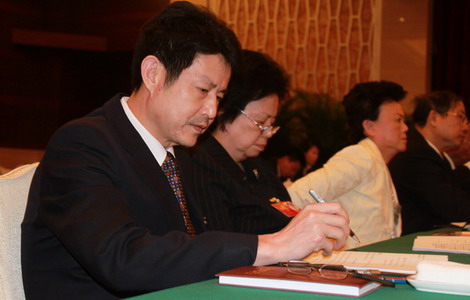 |
|
|
|
|||||||||||
Asia's largest household refuse incineration plant, which is under construction in Beijing, will become operational in October and have a daily processing capacity of 3,000 tons.
The plant is expected to handle one-fourth of the city's trash, and its annual energy output will exceed 300 million kilowatt hours.
Power and heat generated by the plant will be supplied to all four districts in western Beijing, namely Mentougou, Shijingshan, Haidian and Fengtai, Zhu Jimin, chairman of Shougang Group, one of China's largest iron and steel companies, which invested more than 2 billion yuan ($317 million) in the project, said at a news conference on Sunday.
According to Zhu, the group is also conducting research and development on transforming food waste into organic materials and oil products, in order to prevent it from being used to produce "gutter oil" in the catering industry or causing pollution at landfill sites.
"The plant will be located in a mining area in the city's western outskirts in Mentougou district, which is sparsely populated, to limit the impact of its emissions of ash, cinder, dioxin and volatile heavy metals such as manganese on the public," said Mao Da, an expert in solid-waste management at Beijing Normal University.
Due to health concerns and the smell emanating from the plant, many local people have objected to having it near their homes.
Mao said that "a strict environmental evaluation audit is important for the plant, to ensure that the environment is not impaired in the future".
"You can never underestimate the pollutants from incineration plants."
With the growing volume of household trash in the capital, incineration is playing an increasingly important role, according to Chen Liwen, a researcher with Green Beagle, a green non-governmental organization based in Beijing.
Composting, landfill and incineration are the three major ways garbage is treated in China.
Mao said that composting is not a practical option, as this method only works effectively if the waste is biodegradable, such as food waste and garden garbage.
And, as there are few available sites for landfill, Mao said that the government is left with no other option but incineration, which requires less space, and is seemingly the best choice for urban areas, despite the waste gas and cinder it produces.
"However, there is no evidence or testimony to prove that incineration plants are free of the hazards from ash and emissions of flue gas, which contain significant amounts of particulate matter, heavy metals and dioxins," said Mao.
Gaoantun, in Beijing's Chaoyang district, is currently the biggest garbage incineration plant in China. It processes 1,600 tons of garbage every day and produces an annual energy output of 200 million kWh.
The writer can be reached at zhengxin@chinadaily.com.cn
Wu Ying, iPad, Jeremy Lin, Valentine's Day, Real Name, Whitney Houston, Syria,Iranian issue, Sanyan tourism, Giving birth in Hong Kong, Cadmium spill, housing policy

|

|

|

|

|

|